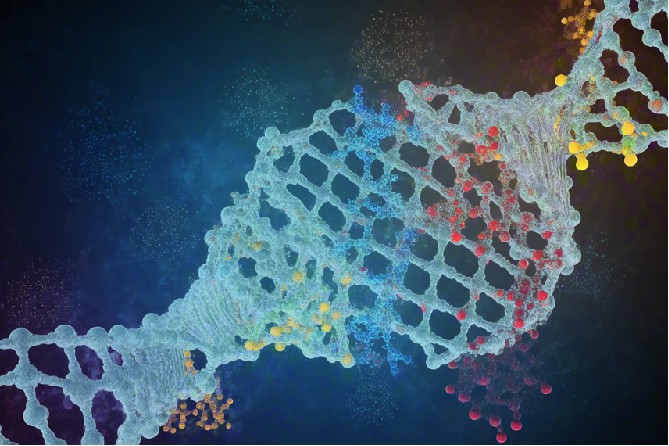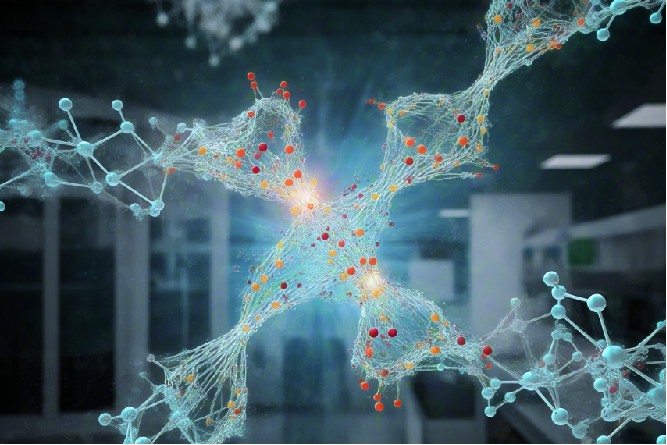Glycoinformatics-assisted O-Glycan Analysis Service
Empowering Scientific Discovery with Advanced O-Glycan Analysis
The typical structure of O -glycan is attached to the polypeptide by a glycosidic bond between a terminal monosaccharide residue and the OH group of serine or threonine. It is the main form of protein glycosylation modification, along with N-glycan. O-glycans have an essential impact on the protein structure, the analysis of O-glycans provides deeper insights into the potential roles of peptides and glycans, thus leading to the development of innovative treatment strategies.
As a professional biology company, CD BioGlyco has mastered rich biological and chemical analysis skills and also developed a widely applied Glycoinformatics platform to provide efficient Glycoinformatics-assisted Glycomics Analysis Services to every client. Here, our O-glycan analysis service is shown below.
The process of analyzing O-glycan usually involves the following:
- Release. O-glycan is usually released by β elimination.
- Labeling. The released polysaccharide is fluorescently labeled.
- Enrichment. Enrichment of labeled O-glycans by chromatography.
- Analysis. Quantitative and qualitative analysis of enriched O-glycans.
For the detection and analysis of O-glycan, CD BioGlyco offers clients a variety of glycoinformatics methods.
Mass spectrometry (MS) and matrix-assisted laser desorption ionization-time of flight MS (MALDI-TOF MS)
MS is a powerful technique for analyzing O-glycans, and we utilize MS to achieve full analysis of the molecular weight, composition, and linkages of O-glycans to our clients. In the analysis of O-glycan using MALDI-TOF MS, we first methylated O-glycan by converting all hydroxyl groups to methyl ethers and stabilizing it by methyl esterification of sialic acid on the carboxyl group. Information on the composition of the glycan can be obtained when the methylated O-glycan is analyzed by MS.
High-performance liquid chromatography (HPLC)
HPLC is an important method to analyze O-glycans with high selectivity. We use HPLC to analyze the physical and chemical properties of O-glycans and provide our clients with an assessment of the heterogeneity of O-glycans. We offer HPLC to separate unlabeled O-glycan and detect fluorescently labeled O-glycan.
Nuclear magnetic resonance (NMR)
The NMR technique is used for the analysis of O-glycan receptor interactions, and NMR can fully analyze the structure of O-glycan.
Glycan microarrays
In the field of glycan structure research, glycan microarrays are a powerful tool. We provide specific glycan microarrays to analyze the binding affinity of O-glycan to target proteins, helping researchers to map the O-glycan of glycosylated proteins using high-throughput methods.

Publication Data
Technology: Porous graphitized carbon nano LC-MS (PGC nano-LC-MS)
Journal: Analytical Chemistry
IF: 7.4
Published: 2024
Results: In this work, the authors performed isomer separation of O-glycan using PGC nano-LC. During sample preparation, the authors were able to highly analyze un-derivatized mono- and dimeric O-glycan in complex biological samples using PGC nano-LC-MS.The experiments demonstrated that the technology supported the identification and quantitative analysis of O-glycan from monomeric to extensively branched and modified structures in a single run, as well as the separation of O-glycan isomers.
 Fig.1 PGC nano-LC-MS-based method for comprehensive analysis of O-glycans. (Zhang, et al., 2024)
Fig.1 PGC nano-LC-MS-based method for comprehensive analysis of O-glycans. (Zhang, et al., 2024)
Applications
- Glycoinformatics-assisted O-glycan analysis service provides the flexibility to analyze the structure, length, and number of branches of O-glycan glycan sequences.
- Glycoinformatics-assisted O-glycan analysis service can be used to research the binding mechanism between O-glycan glycan chains and proteins and explore the role of O-glycan glycan chains in regulating cellular activities and signaling.
- The glycoinformatics-assisted O-glycan analysis service supports the design and synthesis of glycan drugs.
Advantages
- Our experiments have high sensitivity and high coverage of O-glycan.
- We support the analysis of O-glycan in complex biological matrices, such as the characterization of O-glycan in cells and tissues.
- We have a relatively fast turnaround time, which saves our clients' O-glycan research time.
Frequently Asked Questions
- What is the function of the mucin-type O-glycan?
- Mucin-type O-glycans are catalyzed by the peptide N-acetylgalactosaminogalactosyltransferase (ppGalNAc-T) family, and in tumors, there is often a structural and quantitative alteration of the mucin-type O-glycans, resulting in the formation of cancer-associated glycans, such as tumor Tn and T-antigens, etc. The formation of cancer-associated glycans can lead to the alteration of antigenicity and adhesion ability of tumor cells, promoting malignant proliferation and metastasis of tumor cells. These cancer-associated glycans change the antigenicity and adhesion ability of tumor cells and promote the malignant proliferation and metastasis of tumor cells. The structure of these tumor-specific glycans provides a theoretical basis for the diagnosis of tumors and the development of anti-tumor drugs or vaccines.
- What is the essential difference between O-glycan and N-glycan?
- N-glycan and O-glycan are two different types of glycans. N-glycan is N-acetylglucosamine, and the N-glycan chain usually has a mannose-rich pentasaccharide core, which can be classified into three categories, namely, high mannose type, complex type, and heterozygous type, according to the type of pentasaccharide core. In contrast, O-glycan does not share a common pentasaccharide core structure. In addition, during the onset of glycosylation, the N-type glycosidic bond has a special requirement for the sequence of amino acids in the peptide chain, forming a glycosidic bond only with the amino group of the asparagine in the sequence of Asn-X-Ser/Thr, whereas the O-type glycosidic bond has no conserved amino acid site, and is usually connected to the carboxyl group (-COOH) on Ser or Thr.
As one of the leading companies with extensive experience in the field of glycomics, CD BioGlycan provides custom glycoinformatics-assisted O-glycan analysis services to our clients. Your satisfaction is our constant pursuit, and we welcome you to feel free to contact us at any time to discuss your project.
Reference
- Zhang, T.; et al. Comprehensive O-glycan analysis by porous graphitized carbon nanoliquid chromatography-mass spectrometry. Analytical Chemistry. 2024, 96(22): 8942-8948.
For research use only. Not intended for any diagnostic use.
Quick Links
Related Services



 Fig.1 PGC nano-LC-MS-based method for comprehensive analysis of O-glycans. (Zhang, et al., 2024)
Fig.1 PGC nano-LC-MS-based method for comprehensive analysis of O-glycans. (Zhang, et al., 2024)


